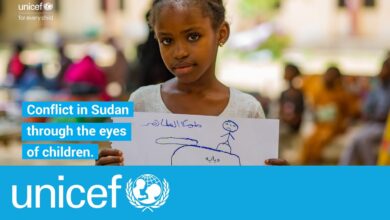Fighting the Current: helping Pakistan recover and prepare for future climate disasters
[ad_1]
“I have never seen climate carnage on this scale.” This is what United Nations Secretary-General António Guterres said when he arrived in Pakistan in September 2022, witnessing first-hand how devastating floods left large swathes of the country under water. Families lost loved ones and their homes, and saw their livelihoods destroyed. Roads, crops, hospitals and schools were washed away. More than 33 million people were affected, including 8 million displaced from their homes.
As this climate catastrophe unfolded, the United Nations swung into action. The empowered Resident Coordinator (RC) system was invaluable for meeting the complex crisis head-on. The UN Resident Coordinator’s Office (UNRCO) immediately focused on coordinating humanitarian efforts, mobilizing the entire UN Country Team and partners – in Pakistan and beyond – to support the Government’s flood response.
Together when crisis strikes
As the Secretary-General’s representative in Pakistan, the UN Resident and Humanitarian Coordinator became the single point of contact for the Government – acting as a one-stop shop for coordination support. Thanks to the 2022 Pakistan Flood Response Plan, partners worked together seamlessly, without duplicating efforts, enabling UN agencies to leverage local networks and work effectively with different provincial authorities.
To boost accountability and transparency, they supported two local government bodies monitoring the efficiency of relief efforts on disaster-affected communities. Collaborating with international financial institutions like the World Bank and the Asian Development Bank made the response even more effective, both for humanitarian assistance, and for recovery and reconstruction.
The UN’s support secured the interest of major donors who have funded nearly 60% of the UN’s 2022–2023 US$816 appeal so far. A year on, the UN and our partners have reached 7.5 million people with food, safe drinking water, sanitation facilities, temporary shelters, mobile health and nutrition clinics, temporary learning centres, protection services for women and children, and agricultural inputs. Families have started rebuilding their homes. Communities are restoring their livelihoods.
But there is still a long way to go, and a new monsoon season is looming ahead.
Caption: After the floods ruined his crops and wreaked his house, 27 year-old Abdul Rasheed now lives with his family of 10 in a small tent.
Photo: © UNIC Islamabad / Saiyna Bashir
Concerns loom on the horizon
In early March 2023, around 1.8 million people were still surrounded by stagnant floodwater. As part of my role in the response efforts as head of the RCO, I have learnt the stories of many of them, including 27-year-old Abdul Rasheed and his family of 10. As he told our team in Khairpur, Sindh, he used to work as a farmer until the floods ruined his crops. Now, with his fields still under water and his house wrecked, he and his family live in a small tent. He has managed to grow a few vegetables by the water, but he can’t plant his land yet.
Rasheed is one of countless farmers who missed the winter season crop because of flooded land and a lack of agricultural inputs. The Food Security and Agriculture sector has provided assistance to more than 7 million people, but more farmers need support for the summer season that has just started.
Families like Rasheed’s are bracing for another climate catastrophe. Their fear is well-founded, with Pakistan being the fifth most vulnerable country to climate change and natural disasters. This is why the UN is looking beyond humanitarian aid and working on solutions to build long-term resilience and invest in climate adaptation and urgent climate action.
Caption: More than 33 million people in Pakistan were were affected by last year’s flooding, including 8 million displaced from their homes.
Photo: © UNIC Islamabad / Saiyna Bashir
The Living Indus: A long-term solution for resilience
The Living Indus Initiative is chief among these solutions.
Led by the Government with support from the UN, donors, private sector and civil society, the Living Indus focuses on restoring the ecological health of the Indus River Basin while consolidating projects that will build communities’ resilience and forge sustainable livelihoods.
The biggest climate initiative in Pakistan’s history, the Living Indus will cost US$11-17 billion and include 25 initial environmental interventions. The Living Indus is at the core of the risk-informed 2023–2027 United Nations Sustainable Development Cooperation Framework – a key feature of the UN reform that enables the Resident Coordinator-led UN Country Team to implement solutions that bridge immediate humanitarian response with longer-term sustainable development interventions.
Backed by the leadership of the Resident Coordinator and the buy-in from across the UN country team, the Living Indus is more than just a one-off response to the ‘climate carnage’ of last year’s floods; it represents a roadmap for Pakistan’s future and a blueprint for building more resilient communities and long-lasting livelihoods. It is also a useful reminder that the time to act is now.
This blog was authored by Shah Nasir Khan, Team leader and Senior Strategic Planner at the UN Resident Coordinator’s Office, UN Pakistan with the support of the United Nations Information Centre Pakistan, and editorial support from UNDCO. For more information about the UN’s work in Pakistan, please visit Pakistan.un.org.
Source link



